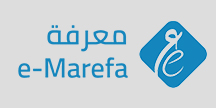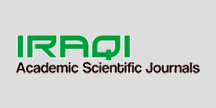A Comparative Study of Syriac and Kurdish Phonemic Systems Based on a Manuscript from Early 20th Century
DOI:
https://doi.org/10.21271/zjhs.25.5.25Keywords:
phonemic system, phonemes, scripts, manuscript, interchangeability.Abstract
This study intends to focus on the vicinity between Kurdish and Syriac languages and the need for interchangeability between two different languages and peoples because of daily commerce, habits and common culture and proverbs of the surrounding areas of Iraqi Kurdistan region.
The study tries to show the labour of Syriac language in Early 20th Century to adapt its own phonemic system (a Semitic language) to the Kurdish phonemic system (an Indo-European language) with examples from manuscript No. 964 from the depository of the Chaldean Antonian Order of Saint Hormizd in Alqosh - Nineveh.
References
• Al-Qinai, J.B.S. (2000), “Morphophonemics of Loanwords in Arabic”, Studies in the Linguistic Sciences, (30) 2, pp. 1-25.
• Bedir-Xan, C.A. (2002), Elfabêya Kurdî & Bingehên gramera Kurdmancî, Stockholm.
• Brock, S.P. (1967a), “Greek Words in the Syriac Gospels VET and PE”, Le Muséon, (80), pp. 289-426.
• _________ (1975b), “Some Aspects of Greek Words in Syriac”, in Dietrich, A. (ed.) Synkretismus im syisch-persischen Kulturgebiet, (Symposion, Reinhausen bei Göttingen, 1971) Abhandlungen der Akademie der Wissenschaften in Göttingen, Philologisch-Historische Klasse, Dritte Folge, (96), Göttingen: Vandenhoeck & Ruprecht, pp. 80-108.
• _________ (1979c), “Aspects of Translation Technique in Antiquity”, Greek Romand and Bezintine Studies, (20), pp. 69-87.
• _________ (1982d), “From Antagonism to Assimilation: Syriac Attitudes to Greek Learning”, in Garsoïan, N. et al. (eds.) East of Byzantium: Syria and Armenia in the Formative Period, (Dumbarton Oaks Symposium, 1980), Washington, D. C.: Dumbarton Oaks, pp. 17-34.
• _________ (1991e), “The Syriac Background to Hunayn’s Translation Techniques”, ARAM, (3), pp. 139-162.
• _________ (1994f), “Greek and Syriac in Late Antique Syria”, in Bowman A.K. & Woolf G. (eds.) Literacy and Power in the Ancient World, Cambridge, pp. 149-160.
• _________ (1996g), “Greek Words In Syriac: Some General Features”, Studia Classica Israelica, (15), pp. 251-262.
• Dehqan, M. & Mengozzi, A. (2014), “A Kurdish Garshuni Poem by David of Barazane (19th Century)”, Hugoye: Hournal of Syriac Studies, (17) 1, pp. 53-79.
• Fox, S.E. (1997), The Neo-Aramaic Dialect of Jilu, Semitica Viva 16, Harrassowitz Verlage, Wiesbaden.
• Haddad, P. & Isaac, J. (1988), Al-Makhtutat A-ssirianiya wal-‘arabiya fi Khizanat Al-Ruhbaniya Al-Kaldaniya fi Baghdad, Al-Makhtutat A-ssirianiya 1, Baghdad.
• Khan, G. (2004a), “Aramaic and the Impact of Languages in Contact with it Through the Ages”, in De la Peña P.B. et al. (eds.) Lenguas en Contacto: El Testimonio Escrito, Madrid, pp. 87-108.
• _________ (2009b), “Then Neo-Aramaic Dialects in Iraq”, in Hunter E.C.D. (ed.) The Christian Heritage in Iraq, Piscataway, Gorgias press, pp. 226-236.
• _________ (2011c), “North-Eastern Neo-Aramaic”, in Khan, G. et al. (eds.) Semitic Languages: An International Handbook, Berlin, de Guryter, pp. 708-724.
• _________ (2012d), “The Language of the Modern Assyrians: The North-Eastern Neo-Aramaic dialect group” in Cetrez, Ö. et al. (eds.) The Assyrian Heritage: Threads of Continuity and Influence, Uppsala, pp. 173-199.
• _________ (2018e), “Jewish Neo-Aramaic in Kurdistan and Iran), in Hary, B. & Benor, S.B. (eds.) Languages in Jewish Communities, Past and Present, Berlin, de Gruyter, pp. 9-34.
• Kiraz, G.A. (2019), “A Functional Approach to Garshunography, a Case Study of Syro-x and x-Syriac Writing Systems”, Intellectual History of Islamicate World, (7), pp. 263-277.
• Kim, D.H. (2010), A Basic Guide to Kurdish Grammar, A self-study reference and practice book, Hawler.
• Kurdish Academy of Language, viewed 14 April 2021 <http://www.kurdishacademy.org/>.
• Lipinski, E. (2001), Semitic Languages, Outline of a Comparative Grammar, 2nd edition, OLA 80, Leuven.
• Mengozzi, A. (2007a), “The History of Garshuni as a Writing System: Evidence from the Rabbula Codex”, in CAMSEMUD, pp. 297-304.
• _________ (ed.) (2011b), Religious Poetry in Vernacular Syriac from Northern Iraq (17th-20th centuries) An Anthology, Corpus Scriptorum Christianorum Orientalium 627 - Scriptores Syri 240, Louvain.
• _________ (2011c), “Neo-Aramaic Studies: A Survey on Recent Publications”, Folia Orientalia, (48), pp. 233-65.
• Muraoka, T. (2005), Classical Syriac, A Basic Grammar with a Chrestomathy, Porta Linguarum Orientalium 19, Wiesbaden.
• Murre-van den Berg, H.L. (1999), From a Spoken to a Written Language. The Introduction and Development of Literary Urmia Aramaic in the Nineteenth Century, Leiden.
• Mutzafi, H. (2004a), The Jewish Neo-Aramaic Dialect of Koy Sanjaq (Iraqi Kurdistan), Semitica Viva 32, Harrassowitz Verlage, Wiesbaden.
• _________ (2008b), The Jewish Neo-Aramaic Dialect of Betanure (Province of Dihok), Semitica Viva 43, Harrassowitz Verlage, Wiesbaden.
• Oncu, M. (2020), Gotinên Pêşiyan, 4 Vols., Ankara.
• Sabar, Y. (1982a), Folk Literature of the Kurdistani Jews: An Anthology, Yale Judaica Sieres 23, London.
• _________ (2002b), A Jewish Neo-Aramaic Dictionary, Semitica Viva 28, Harrassowitz Verlage, Wiesbaden.
• Scher, A. (1906a), “Notice sur les Manuscrits Syriaques Conservés dans la Bibliothèque du Couvent des Chaldéens de Notre Dame des Semences”, Journal Asiatique, (7) 10, pp. 479-512.
• _________ (1906b), “Notice sur les Manuscrits Syriaques Conservés dans la Bibliothèque du Couvent des Chaldéens de Notre Dame des Semences”, Journale Asiatique, (8) 10, pp. 55-82.
• Thackston, W.M. (2006a), Kurmanji Kurdish, A Reference Grammar with Selected Readings, viewed 14 April 2021 <http://www.fas.harvard.edu/~iranian/Kurmanji/kurmanji _complete.pdf>.
• _________ (2006b), Sorani Kurdish, A Reference Grammar with Selected Readings, viewed 14 April 2021 <http://www.fas.harvard.edu/~iranian/Sorani/sorani_complete.pdf>.
• Vosté, J.M. 1929, Catalogue de la Bibliothèque Syro-Chaldéenne du Couvent de Notre Dame des Semences près d’Alqoš (Iraq), Rome & Paris.
• Wasserstein, A. (1993a), “Aramaic Transcription of Greek Loanwords”, Scripta Classica Israelica, (12), pp. 200-208.
• _________ 1995b, “Non-Hellenized Jews in the Semi-Hellenized East”, Scripta Classica Israelica, (14), pp. 111-137.
• Yohanna, S.S. (2015), The Gospel of Mark in the Syriac Harklean Version, An Edition Based upon the Earliest Witnesses, Biblica et Orientalia 52, Rome.
Downloads
Published
How to Cite
Issue
Section
License
Copyright (c) 2024 Samer Soreshow Yohanna

This work is licensed under a Creative Commons Attribution-NonCommercial-ShareAlike 4.0 International License.
Except where otherwise noted, content on this site is licenced
under a Creative Commons Attribution License 4.0 (CC BY- 4.0)










